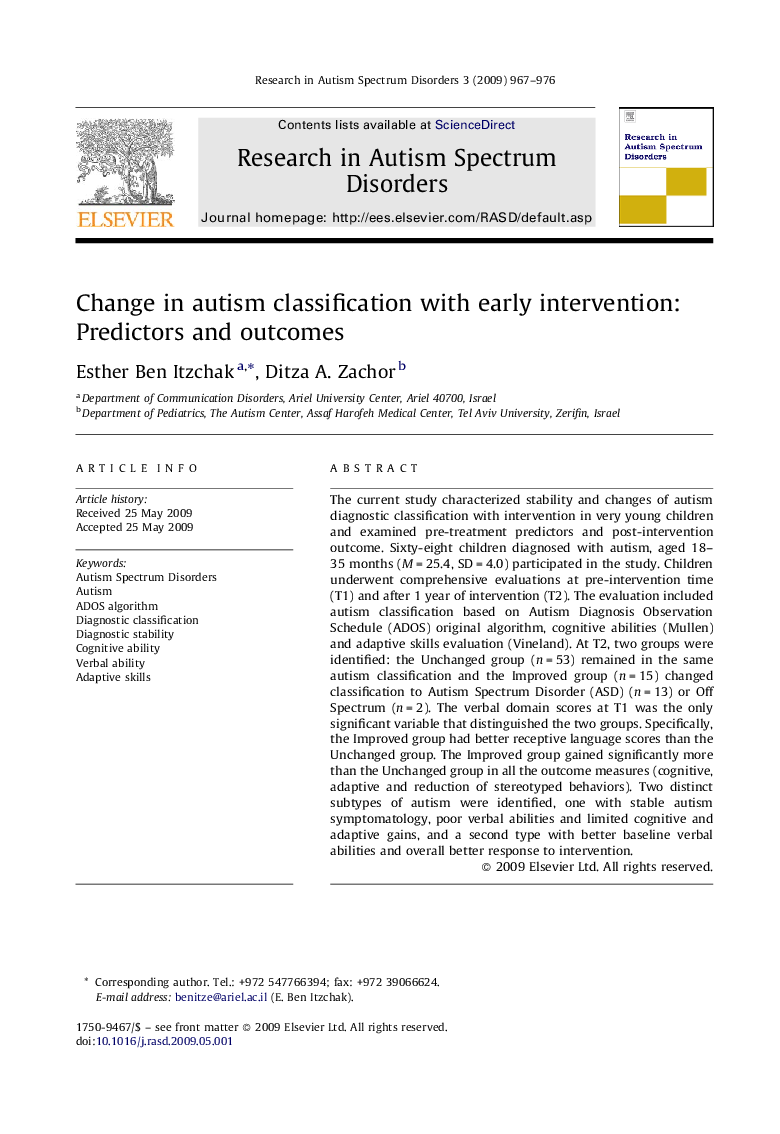| Article ID | Journal | Published Year | Pages | File Type |
|---|---|---|---|---|
| 370801 | Research in Autism Spectrum Disorders | 2009 | 10 Pages |
The current study characterized stability and changes of autism diagnostic classification with intervention in very young children and examined pre-treatment predictors and post-intervention outcome. Sixty-eight children diagnosed with autism, aged 18–35 months (M = 25.4, SD = 4.0) participated in the study. Children underwent comprehensive evaluations at pre-intervention time (T1) and after 1 year of intervention (T2). The evaluation included autism classification based on Autism Diagnosis Observation Schedule (ADOS) original algorithm, cognitive abilities (Mullen) and adaptive skills evaluation (Vineland). At T2, two groups were identified: the Unchanged group (n = 53) remained in the same autism classification and the Improved group (n = 15) changed classification to Autism Spectrum Disorder (ASD) (n = 13) or Off Spectrum (n = 2). The verbal domain scores at T1 was the only significant variable that distinguished the two groups. Specifically, the Improved group had better receptive language scores than the Unchanged group. The Improved group gained significantly more than the Unchanged group in all the outcome measures (cognitive, adaptive and reduction of stereotyped behaviors). Two distinct subtypes of autism were identified, one with stable autism symptomatology, poor verbal abilities and limited cognitive and adaptive gains, and a second type with better baseline verbal abilities and overall better response to intervention.
